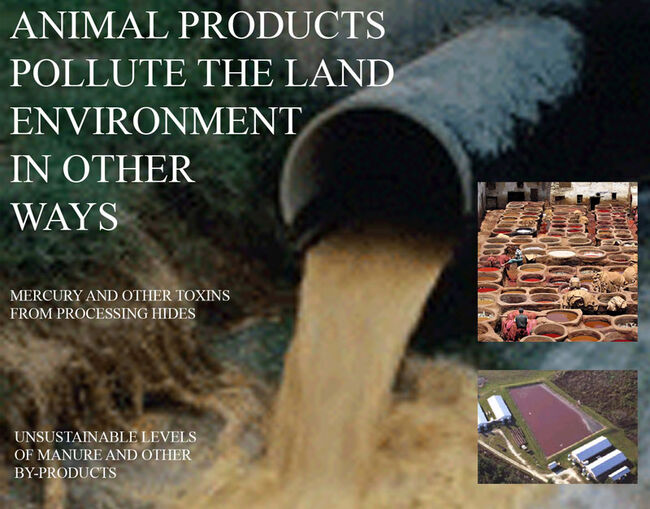Arguments
Animal raising creates unsustainable levels of manure and other by-products
Mercury and other toxic materials are released in the process of tanning animal hides
Objections
Nil
References for the Arguments
References for the Objections
Examples and Anecdotes
- Pig Lagoons in the United States.
Pig farms with 100,000 animals produce the waste of a city of a quarter-million people, but have no wastewater treatment system. At a single site in Missouri, one pig factory produces fecal waste equivalent to that of a city of 360,000.
One of the main issues is the lagoons typically used by pig farms. Most are as big as football fields. In October of 1999, Hurricane Floyd swept through North Carolina. Spreading with the rain was feces and urine, mostly from giant pig farms. The storm killed more than two million turkeys, chickens, pigs and other farmed animals. Images of bloated pigs and turkey carcasses filled television screens. The storm destroyed more than $1 billion in crops and compromised the drinking water of a portion of the state, with more than 50 lagoons flooding.
In 1998, an Environmental Protection Agency water quality report to Congress cited agriculture as the leading source of pollution in 70% of impaired river miles. The Department of Environment and Natural Resources in North Carolina found 41 cases in which pollution from pig farms reached creeks, lakes, or rivers in 2000. They identified 285 cases in which pig lagoons were too full and in danger of spilling, and 338 cases in which pig farmers had sprayed too much pig waste onto crops as fertilizer. Over a billion fish were killed due to a pig waste spill into the Neuse River in North Carolina in June of 1995.
There are wastes in addition to manure. According to one industry journal, "a 5000 sow farrow-to-finish farming system with a mortality of 7%, 10%, 5%, 1% and 1% in the sow, neonatal, nursery, growing, and finishing herd, respectively, will produce in one year over 200,000 pounds of dead pigs."
